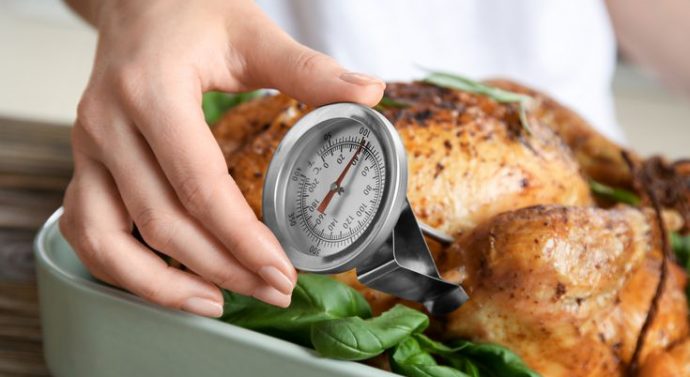
A Meat Thermometer Buying Guide
Food & Cooking March 24, 2022, Comments OffYou can’t tell if a food is safely cooked by sight, smell or even taste. A food thermometer is the only way to ensure food is cooked to the correct internal temperature and parasites are eliminated.
A food thermometer is necessary for more than just meat and poultry. A safe minimum internal temperature must be reached to avoid food poisoning in all cooked foods. A food thermometer is also needed after food is cooked to ensure the temperature doesn’t fall in to the danger zone.
The temperature “danger zone” for perishable foods is between 40° and 140° Fahrenheit. Perishable foods are no longer safe to eat if they have been in this danger zone for more than two hours (one hour in 90° Fahrenheit or above). This is especially important for buffet and potluck-style gatherings where it’s easy to reduce program time and food may sit out for a longer time of time.
Choosing a meat thermometer
There are a wide variety of food thermometers available. Select the type right for you and remember to make use of it each time you cook:
Dial oven-safe thermometers can remain in place as the food cooks. Insert two to two and a half inches deep into the thickest part of the meals. Temperature readings are ready in one to two minutes. Use this type of thermometer for roasts, casseroles and soups. They aren’t great for thin foods.
Instant-read thermometers aren’t meant to be left in the foodstuff while it cooks. Instead, utilize it to check food towards the end of cooking. Place the stem about two to two and a half inches deep in the thickest area of the food. This thermometer reads the temperature instantly, typically in 10 to 20 seconds. Found in roasts, casseroles and soups, and inserted sideways in thin dishes.
Thermometer-fork combo thermometers are convenient for grilling and browse the temperature of foods in two to 10 seconds. Place at least a fourth of any inch deep in the thickest area of the food, with the sensor in the fork fully inserted.
Pop-up thermometers and disposable temperature indicators are designed for one-time use. These thermometers in many cases are suitable for specific temperature ranges, for example, the safe cooking temperature for hamburgers or turkey. These also browse the temperature of foods quickly, in five to 10 seconds, when the material arises or changes color. For best practice, also check the temperature of large items, like whole turkeys, with a typical thermometer.
How to Use a Food Thermometer
Before utilizing a food thermometer, read the manufacturer’s instructions. Read about how precisely far to insert the thermometer in a food to get a precise reading.
Step 1: Test it. Use either ice water or boiling water to verify the food thermometer is accurate.
Step 2: Calibrate it. Read the instructions about how precisely to adjust the thermometer, as needed, to ensure you get an accurate reading.
Step 3: Place it properly. Placement is very important to get an accurate reading. Place the meals thermometer in the thickest the main food, making sure never to touch bone, fat or gristle.
Step 4: Don’t rush it. Wait the recommended timeframe for your kind of thermometer. For meat products including raw beef, pork, lamb, veal steaks, chops and roasts, use the meals thermometer before removing meat from heat source. For safety and quality, allow meat to rest for at least 3 minutes before carving or consuming.
Step 5: Take care of it. Clean your food thermometer with clean, soapy water after every use. This prevents cross-contamination and the spread of parasites.